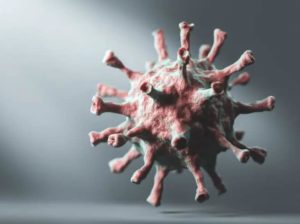Are you one of those people who are hesitant to dye their hair because of the fear that it might cause hair loss? Well, you’re not alone! The question “Does hair dye cause hair loss?” has been a topic of debate for years. Some say that it’s just a myth, while others swear by its truthfulness.
But what is the real answer? Is it fact or fiction? In this blog post, we will dive deep into the science behind hair dye and its effects on our precious locks. So sit tight and get ready to uncover the truth about this age-old question!
The (brief) history of hair coloring
Hair coloring has been around for centuries, and the methods used have evolved over time. The Ancient Egyptians used henna to dye their hair, while the Greeks and Romans used a mixture of lead oxide and calcium hydroxide. In 1907, hair dye became more accessible to the masses when Eugène Schueller, the founder of L’Oréal, invented the first synthetic hair dye.
However, concerns about the safety of these first synthetic dyes arose, leading to the creation of more natural options in the 20th century. Today, the hair coloring industry is thriving, with a wide variety of products and techniques available.
How does hair dye work?
To understand how permanent hair dye works, it’s essential to know the basic structure of a hair strand. Each hair consists of three main parts: the cuticle, cortex, and medulla. The outermost layer, the cuticle, is made up of overlapping scales that protect the inner layers.
Hair dye contains a combination of chemicals, the most important being ammonia and hydrogen peroxide. These chemicals work together to achieve the desired color change.
- Lifting the cuticle: Ammonia is responsible for the initial step in the process. It acts as an alkaline agent that raises the cuticle scales on the hair shaft. This lifting of the cuticle allows the dye to penetrate the cortex, which is the middle layer of the hair.
- Color formation: Once the cuticle is lifted, the hydrogen peroxide in the dye helps in the formation of color. It breaks down the existing color molecules in the hair, which are called melanin. Melanin is responsible for the natural color of your hair, and its concentration and type determine your hair’s hue.
- Dye molecules: Hair dye contains small dye molecules that are specifically designed to penetrate the cortex. These dye molecules are of different sizes and structures, allowing them to replace the natural melanin molecules in the hair shaft.
- Chemical reaction: As the dye molecules enter the cortex, they undergo a chemical reaction that results in the formation of new, colored molecules. These molecules are larger and cannot easily escape from the hair shaft, which is why the color change is long-lasting.
- Locking in color: After the new color molecules are formed, the cuticle scales are lowered again, trapping the color inside the hair shaft. This locking mechanism ensures that the color remains vibrant and durable.
- Rinse and neutralization: Once the desired color change has occurred, the hair dye is rinsed out. Some dyes require an additional step where a neutralizing agent is applied to stabilize the new color and prevent any further chemical reactions.
Can hair dye cause hair loss?
The answer is not a straightforward one. While hair dye itself may not directly cause hair loss, it can weaken hair strands and contribute to breakage.
The chemical ingredients in hair dye can strip the hair of its natural oils and proteins, leaving it dry and brittle. This can lead to hair breakage and even thinning over time. Additionally, some people may have a severe allergic reaction to the chemicals in hair dye, which can cause scalp irritation and hair loss.
Not everyone will experience these negative effects from hair dye. With proper hair care and maintenance, including regular deep conditioning treatments and avoiding heat styling tools, it is possible to minimize any potential damage from hair dye.
Ultimately, the decision to dye your hair should be based on personal preference and individual factors, such as hair texture and sensitivity. So, while hair dye may not directly cause hair loss, it is important to be mindful of the potential risks and take steps to protect your hair health.
Which chemicals may cause allergic reactions or scalp irritation?
While hair dye is not directly linked to hair loss, it can cause allergic reactions or scalp irritation in some individuals. The harsh chemicals present in certain hair dyes, such as ammonia and peroxide, can lead to inflammation of the scalp, resulting in itching, redness, and even blisters.
Furthermore, p-phenylenediamine (PPD), a common ingredient found in darker hair dyes, has been known to cause allergic reactions in some individuals, ranging from mild irritation to severe swelling and difficulty breathing.
In one study, a woman presented with extensive hair loss caused by this ingredient. She had lost around 90% of her hair after using hair dye containing the chemical. The good news is that even in extreme cases like this, hair loss is reversible as the hair follicles are safe from the harmful effects of hair coloring products.
It is important to perform a patch test before using any hair dye to ensure that you are not allergic to any of the ingredients and to avoid leaving it on for too long.
Additionally, opting for natural or organic hair dyes can minimize the risk of allergic reactions and scalp irritation. While hair dye may not cause hair loss, it is crucial to be aware of the potential side effects and to take the necessary precautions to protect your scalp and overall health.
Are natural hair dyes safer?
Natural hair dyes have been gaining popularity as a safer alternative to synthetic dyes. The concern with synthetic dyes is the presence of harmful chemicals like ammonia, peroxide, and paraphenylenediamine (PPD) that may cause allergic reactions, damage hair strands, and may even lead to hair loss.
Natural hair dyes, on the other hand, use ingredients like henna, indigo, chamomile, and coffee, which are gentler on the hair and scalp. They may not be as long-lasting as synthetic dyes, but they offer a more natural-looking color and are less damaging to the hair.
However, not all natural hair dyes are created equal. Some natural dyes may still contain synthetic ingredients, so it is essential to read labels carefully and do research before purchasing a product.
Furthermore, it is still possible to have an allergic reaction to natural ingredients, so patch testing is still recommended before using any hair dye.
How often should you use hair dye?
This is a common question among people who love to switch up their hair color. As demonstrated, it can be confidently stated that hair dye is not a direct cause of hair loss. However, it’s still important to consider the frequency of use. Overusing hair dye leads to damage and breakage, which could eventually cause hair loss.
It’s recommended to wait at least four to six weeks before dyeing your hair again to allow your hair to recover from the chemicals in the dye. Choose a high-quality hair dye that is gentle on your hair and scalp. Look for products that are free of harsh chemicals like ammonia and parabens, as these can cause irritation and damage.
If you’re concerned about hair loss, it’s best to consult a professional stylist or dermatologist before dyeing your hair. Remember, moderation is key when it comes to hair dyeing. By taking the necessary precautions and limiting the frequency of use, you can enjoy a beautiful new hair color without compromising the health of your hair.
When does hair recover from damage from hair dye?
Temporary hair loss after hair colouring can only improve when colouring is stopped. Once the stressed hair follicles return to the growth phase, hair growth should then resume as normal.
In the rare case that hair follicles have been irrevocably destroyed due to repeated and prolonged wrong use of in the colouring process and resulting damage to the skin, then only a hair transplant can help.
However, other causes such as genetic male or female pattern hair loss, telogen effluvium, alopecia areata or diffuse hair loss should be excluded beforehand.
Conclusion
In conclusion, hair dye does not directly cause hair loss.if you use hair dye correctly and avoid frequent use to prevent hair breakage and allergic skin reactions.
It’s always better to consult a professional hairstylist before using any hair dye products and follow the instructions carefully.
Remember, healthy hair is beautiful hair, and taking care of it should always be a top priority. So, go ahead and experiment with different hair colors, but make sure to do it safely to keep your locks looking luscious and stunning!




